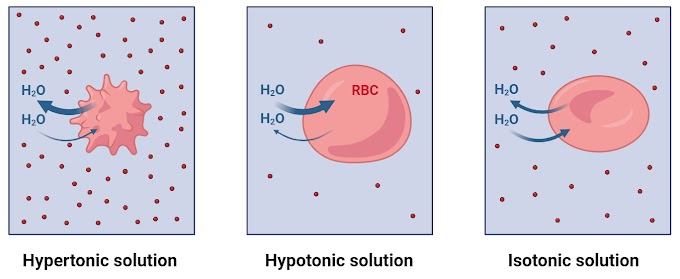5 Functions of Blood
Blood is often referred to as the river of life—and for good reason. This remarkable fluid plays a vital role in maintaining homeostasis, supporting vital functions, and defending the body against threats. Composed of red blood cells, white blood cells, platelets, and plasma, blood is much more than a simple transporter of oxygen.
Below, we explore five essential functions of blood, highlighting their importance through real-life examples.
1. Transportation of Oxygen, Nutrients, and Waste
One of the most fundamental roles of blood is transportation. Red blood cells (RBCs), rich in the protein hemoglobin, carry oxygen from the lungs to every cell in the body. This oxygen is essential for cellular respiration, which produces energy.
At the same time, blood picks up carbon dioxide—a waste product of metabolism—and returns it to the lungs to be exhaled.
In addition to gases, blood transports nutrients like glucose, amino acids, vitamins, and minerals from the digestive tract to cells throughout the body. It also carries waste products to the kidneys and liver for detoxification and excretion.
For instance, after a meal, your blood is busy distributing absorbed nutrients to your muscles and organs while simultaneously removing urea and other byproducts through the kidneys.
2. Regulation of Body Temperature and pH
Blood plays a crucial role in regulating the body's internal environment, particularly temperature and pH. It helps maintain a constant body temperature through the redistribution of heat. When you're overheated—after a run, for example—blood vessels near the skin dilate (a process called vasodilation) to release heat. Conversely, in cold weather, these vessels constrict (vasoconstriction) to conserve warmth.
Furthermore, blood maintains a stable pH (around 7.35–7.45) by using buffer systems, such as the bicarbonate buffer. This balance is essential for enzyme activity and cellular function. Without this precise regulation, even slight changes in blood pH could result in harmful conditions like acidosis or alkalosis.
3. Protection Against Infections and Blood Loss
Blood is a critical component of the immune system, defending the body from harmful invaders. White blood cells (leukocytes) patrol the bloodstream and tissues, identifying and destroying bacteria, viruses, and other pathogens. Specialized cells, such as neutrophils and lymphocytes, target specific threats and coordinate immune responses.
For example, when you get a cut, your blood quickly initiates clotting. Platelets rush to the site, clump together, and trigger a cascade of proteins that form a fibrin clot—effectively sealing the wound to prevent blood loss and entry of pathogens.
This protective mechanism is life-saving and crucial to survival, as seen in conditions like hemophilia where clotting is impaired.
4. Hormonal and Chemical Messaging
Blood acts as a communication network for the endocrine system by transporting hormones—chemical messengers released by glands—to target organs and tissues. These hormones regulate growth, metabolism, reproduction, and stress responses.
For instance, during a stressful situation, the adrenal glands release adrenaline into the bloodstream. This hormone rapidly prepares the body for “fight or flight” by increasing heart rate, dilating airways, and mobilizing energy reserves.
Similarly, insulin, released by the pancreas, travels through the blood to help cells absorb glucose after a meal, playing a vital role in blood sugar regulation.
5. Maintenance of Fluid Balance and Electrolyte Levels
Blood also contributes to the regulation of fluid balance and electrolyte concentration in the body. Plasma, the liquid portion of blood, contains proteins such as albumin that help maintain oncotic pressure—pulling water into blood vessels from surrounding tissues to ensure proper hydration and circulation.
Additionally, blood carries electrolytes like sodium, potassium, calcium, and chloride, which are essential for nerve impulses, muscle contractions, and heart function.
For example, athletes often rely on electrolyte-rich drinks after intense workouts to replenish what’s lost in sweat—demonstrating the importance of blood in maintaining chemical stability.
Conclusion
The functions of blood are incredibly diverse and essential to life. From delivering oxygen and nutrients to regulating temperature and defending against disease, blood supports nearly every biological system in the human body.
Understanding these functions not only highlights the complexity of our physiology but also underscores the importance of maintaining cardiovascular and overall health. So the next time your heart beats, remember—it’s not just pumping fluid, it’s powering life itself.
Short Questions and Answers
1. What component of blood carries oxygen?
A. Red blood cells carry oxygen using a protein called hemoglobin.
2. How does blood help regulate body temperature?
A. Blood distributes heat throughout the body and uses vasodilation or vasoconstriction to control heat loss.
3. Which cells in the blood fight infections?
A. White blood cells (leukocytes) protect the body by attacking pathogens.
4. How does blood help in chemical communication?
A. Blood transports hormones from glands to target organs to regulate body functions.
5. What role does blood play in fluid balance?
A. Plasma proteins and electrolytes in blood help maintain the body’s fluid and electrolyte levels.






0 Comments